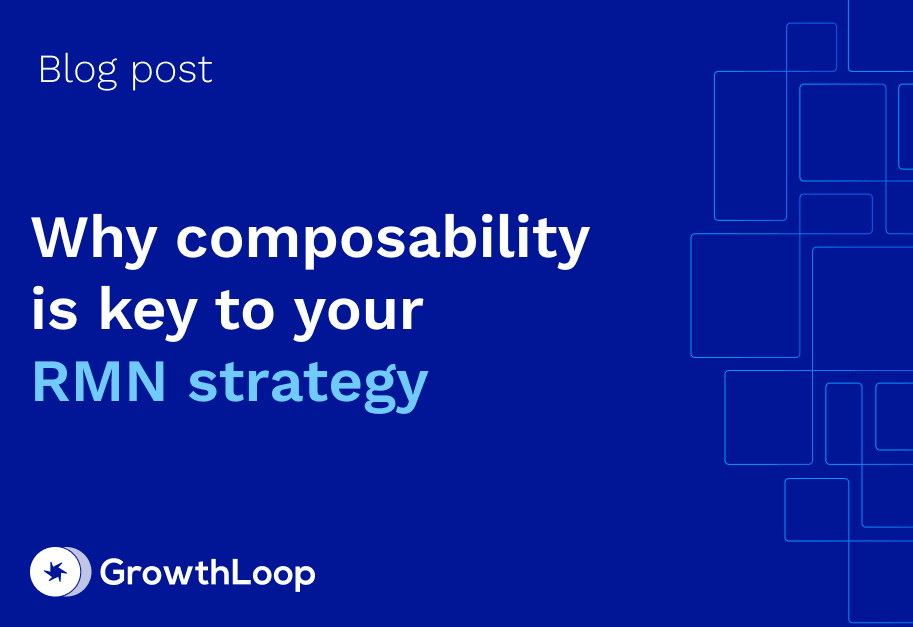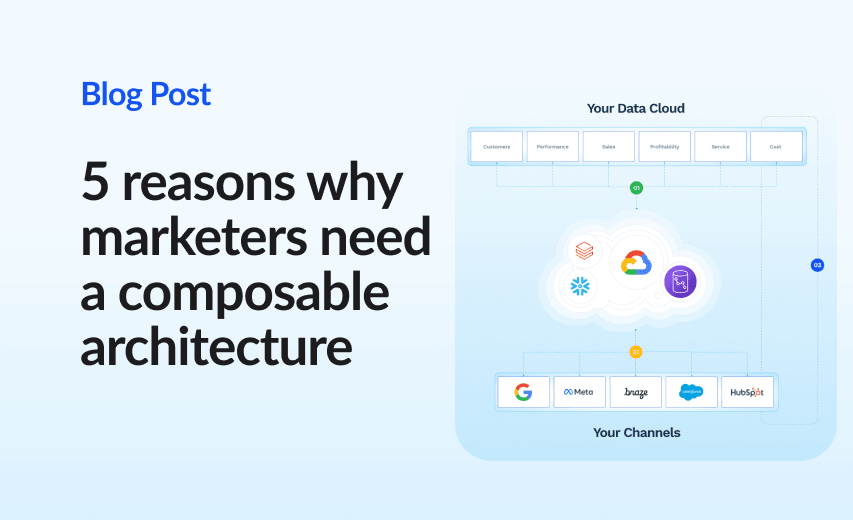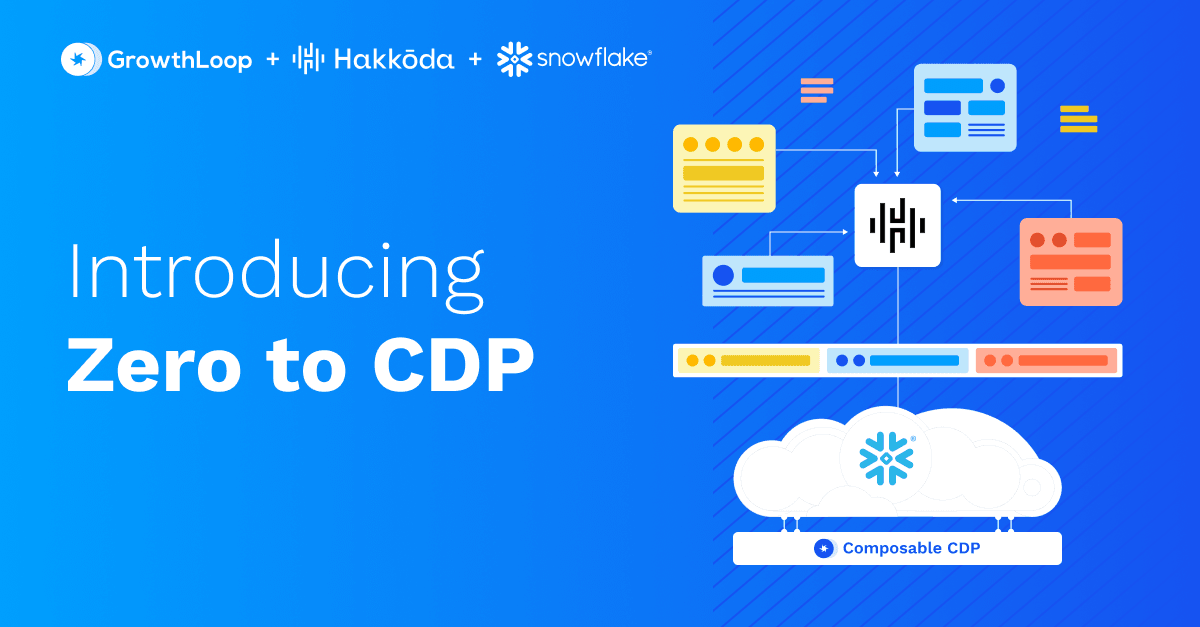How a customer data platform works
Customer data platforms include components that store and organize data, build audiences, and sync audiences across various channels. Here’s what the customer data platform architecture looks like:
Data storage and organization
A CDP starts with customer data. Traditional packaged CDPs store that data in the CDP itself. With a composable CDP, the data lives in your data warehouse — such as Snowflake or BigQuery.
The CDP also helps organize customer data across different sources to create complete and accurate customer profiles (also called identity resolution).
Audience and user journeys
Once the data is organized, CDPs make the data available for marketers to create audiences and map user journeys across a wide range of channels and destinations.
An audience is a specific group or cohort of customers that you are targeting with messaging and offers.
A user journey includes the different customer touchpoints you build for an audience. For example, a journey may start with an email, then a social media ad, then a push notification.
Typically, a traditional CDP uses its own pre-built data points to organize customer information, and marketing teams must follow these parameters. For B2B marketers, this can pose issues with having a full view of account and contact data. And for B2C marketers with multiple products or product lines, a traditional CDP can make it challenging to store customers’ product-specific data.
Since a composable CDP sits on your data warehouse, there’s more flexibility with the customer data points you can use and track.
Audience destinations
Once you have audiences built and journeys mapped, a CDP allows you to activate those audiences to different destinations — email platforms, CRMs, social media ads, search ads, push notifications, etc. Packaged CDPs and marketing clouds typically prescribe specific audience destinations, while composable CDPs can use the platforms your team already has in place.
As the campaigns run, CDPs can gather data from the audience destinations and push that customer or prospect information back into the data cloud. This process allows your marketing team to iterate on and improve future campaigns.
%2520(1).png&w=3840&q=90)







